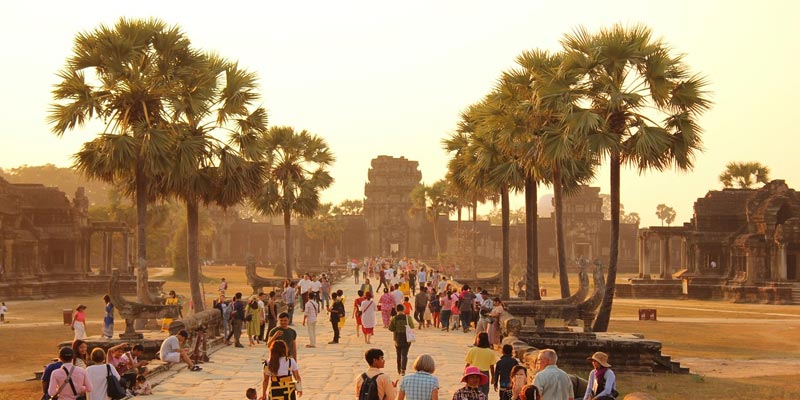The crown jewel of Cambodia’s ancient Khmer civilization, Angkor Wat, stands as a UNESCO World Heritage Site and boasts status as one of the world’s most iconic and well-preserved temple complexes. The decision to visit this archaeological wonder critically shapes travelers’ experiences; thus, they must discern when is best.
This article delves into the factors influencing optimal visiting times for Angkor Wat: weather conditions; crowd density, an integral consideration in pandemic times, and special events all play significant roles. Indeed; deciding when you’ll make your pilgrimage is crucial for optimizing said experience as a discerning traveler.
Below are three crucial points to when to consider visiting Angkor Wat.
1. Weather Considerations
Dry Season (November to March)
Cool temperatures and minimal rainfall characterize the dry season, which draws the highest number of visitors to Angkor Wat. Particularly favorable are the months from November to February; during this period, comfortable weather facilitates temple exploration.
Nevertheless—peak tourist season though it may be—one should note that significant crowds can still gather.
Hot Season (April to June)
The transition from the dry season to the hot season significantly escalates temperatures. April, indisputably the hottest month, often sees thermometers surpassing 35°C (95°F).
Though accessible, extended periods of exploration in temples present a challenge due to their exposure to intense heat.
Monsoon Season (July to October)
Heavy rainfall, brought by the monsoon season, metamorphoses the landscape surrounding Angkor Wat into a lush greenery. The temples assume an unparalleled charm during this time; however, frequent rain showers can pose challenges for outdoor exploration.
Yet, July and August—the initial months of the monsoon season—present a promising compromise with their sparse tourist population and verdant surroundings.

2. Crowd Levels
High Season
Angkor Wat attracts its highest influx of visitors from November to February. Tourists fill the temples, often overcrowding popular spots during sunrise and sunset in particular. Planning visits to major temples during off-peak hours is an advisable strategy.
Shoulder Seasons
From March to early April, and again from September through October – these are the shoulder seasons. They strike a balance and crowd levels remain manageable; weather conditions turn favorable.
Opting for exploration in this period offers an experience marked by relaxation; simultaneously sidestepping peak tourist season intensity, a definite advantage!
Low Season
A significant drop in tourist numbers characterizes the monsoon season: rain, while potentially deterring – presents an interesting juxtaposition. The reduced crowds not only allow for a more intimate encounter with the temples; they also offer unique opportunities to experience these architectural wonders without overwhelming influxes of people.
Moreover, during this time, the landscapes transform into scenes of lush vibrancy and captivating beauty.
3. Special Events
Occasionally, Angkor Wat hosts special events and festivals: these can infuse a unique dimension into your visit.
Take the Khmer New Year for instance, which is typically celebrated in April with traditional ceremonies and water festivities; participating in such events not only enriches but also amplifies your cultural experience at Angkor Wat.
Conclusion
Personal preferences and priorities determine the optimal time to visit Angkor Wat. Should you prioritize weather, crowd levels, or unique cultural experiences; an understanding of each season’s nuances will enable a trip that aligns with your preferences.
Year-round, Angkor Wat promises a journey through Cambodia’s rich cultural tapestry as its timeless beauty and historical significance always captivate visitors.




